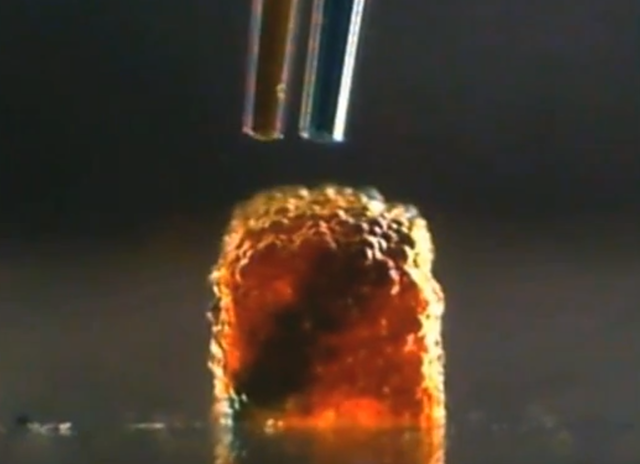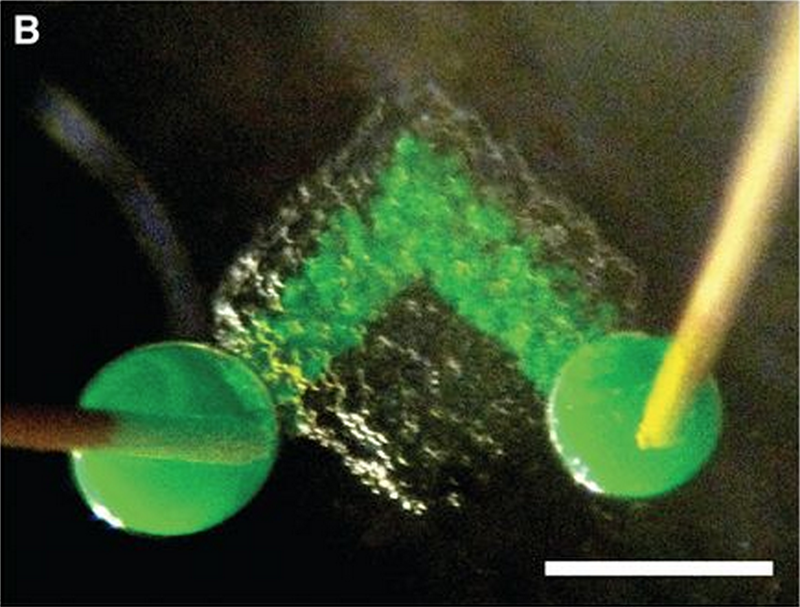A new type of 3D printer in the future will allow the printing of biological tissue

According to a study published in Science , a group of scientists from the University of Oxford created a 3D printer that allows you to create the necessary structure from drops of liquid placed in oil. Thanks to the lipid layer, the drops do not mix with each other, but retain their shape.
Researchers managed to create a whole "network" of 35,000 drops, which, as claimed, is similar in elasticity to brain or adipose tissue and can maintain its state for up to several weeks.
Why is this invention so interesting? Firstly, the liquid inside the drops can be replaced. Scientists managed to send an electric signal through such a network using drops containing protein (green in the photo), while such drops remain isolated from the rest. Thus, the created structure imitates the work of nerve cells in some way.

Another experiment demonstrates how, thanks to the specially selected droplet contents and their combination, the created network “stacks up” (a kind of 4D print ) into a unique structure that would not be possible to print on a conventional 3D printer. This is due to the process of osmosis of water through the membrane of the drop until equilibrium is established.
The creators of the technology note that as it develops, printed networks can be integrated with living organisms and replace, for example, missing tissues. But at the moment, the method is completely synthetic - the networks, at least, lack the genome and the ability to replicate in order for the dreams of scientists to come true. “We are not trying to create materials that will repeat living tissues in everything, but structures that can perform their functions,” concluded Hagan Bayley, project manager.
Via the verge
